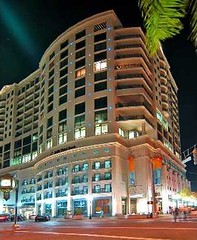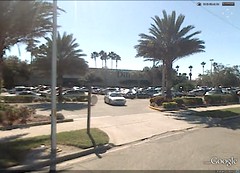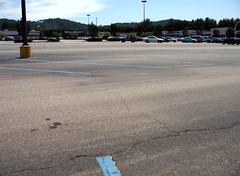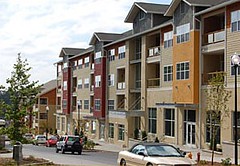Tax revenue from downtown mixed-use outperforms big-box superstores and malls

Posted July 14, 2010 at 1:31PM
Analysis of property tax revenues from Sarasota, Florida reveals that mixed-use, compact development outperforms Walmarts and conventional shopping malls by a considerable margin when compared on a revenue-per-acre basis. So writes one of our better observers of the built environment, Mary Newsom, in The Charlotte Observer (the column is also on CitiWire). Some key excerpts:
“As local politicians across the country get scorched by voter anger over recession-induced budget cuts — laying off teachers, closing schools and libraries and slashing services — perhaps they’ll be more receptive than usual to some powerful and surprising tax revenue numbers.
“So what follows is about fiscal prudence as much as it is about smart city planning. Conventional wisdom, of course, says that to prop up the property tax base, a high-end shopping mall is just the ticket . . .
"Not surprisingly, when you work the numbers on a per-acre basis, residential property inside [Sarasota] county’s municipalities offered the biggest revenue per acre — a little more than $8,200 per acre for single family houses within the city of Sarasota . . .
“[But] big box stores such as Walmart and Sam’s Club, when analyzed for county property tax revenue per acre, produce barely more than a single family house; maybe $150 to $200 more a year, [Sarasota Smart Growth Director Peter] Katz said. (Think of all those acres of parking lots.) Among retail properties, the biggest per-acre property tax revenue in his county, almost $22,000 per acre, comes from Southgate Mall, the county’s highest-end commercial property with Macy’s, Dillards and Saks Fifth Avenue department stores. That’s not so surprising.
“But here’s the shocker: On a horizontal bar chart Katz showed, you see that zooming to the far right side, outpacing all the retail offerings, even the regional shopping mall, is the revenue from a high-rise mixed-use project in downtown Sarasota. It sits on less than an acre and contributes a hefty $800,000 in tax per acre. (Add in city property taxes and it’s $1.2 million.)”
Newsom goes on to report that that the downtown development is worth more per acre than the Walmart and Southgate Mall combined. In fact, by my quick calculation, it’s worth some 95 times as much per acre as the Walmart and some 36 times as much in per-acre revenue as Southgate, the county’s highest-end shopping destination. Newsom further interprets Katz's analysis as showing that, even if the mixed-use building were only three stories, with residential over retail, it would still generate over $70,000 in tax revenue per acre, more than three times the return of Southgate Mall.
And it's not just Sarasota. Joe Minicozzi of Public Interest Projects, a development firm in my home town of Asheville, North Carolina, has compared revenues from suburban and urban properties in Asheville. Writing in comments on the forum Uberview, Minicozzi says that "the Asheville Walmart [photo above left] is returning an estimated $50k/acre in TOTAL (retail and property) taxes to the city of Asheville, while properties downtown are producing $330k per acre in property taxes alone. Bear in mind that this is a small community of about +70k people, and the buildings [on a referenced downtown street] are no taller than 6 stories. The simple statement with this is, you make more with less land consumption."
Newsom's column, which I recommend, also discusses the potential ramifications of sales tax revenues, returns on infrastructure investments, and other subtleties at play. She concludes:
“Evidence is piling up of the benefits of compact, in-town development compared with auto-centric greenfield development. With a smaller carbon footprint, it’s kinder on the environment. It’s kinder on residents’ waistlines, too, as they’re likely to walk more and drive less. And now there’s evidence it’s kinder to government coffers, as well. And that’s an attribute worth some serious attention.”
I agree.
Move your cursor over the images for credit information.



